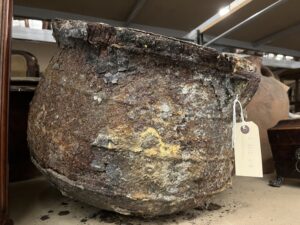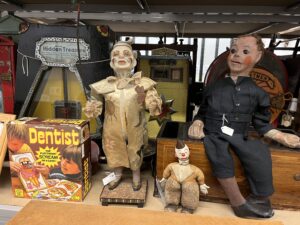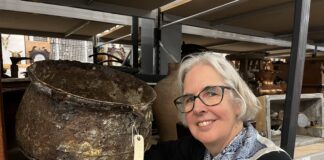A mysterious iron cauldron believed to have been hidden inside the walls of a Victorian house in Chapeltown more than 100 years ago has been revealed by curators at Leeds Museums and Galleries.
The unusual find, now part of the city’s permanent collection, sheds light on an age-old custom where people concealed ritual objects in buildings to protect against evil spirits, curses or disease.
The cauldron was discovered in 2012, when workmen investigating a strange dripping sound broke through a cellar wall and uncovered the rusted vessel. Residents had previously reported unsettling activity in the house, from doors flying open to unexplained noises echoing through the rooms.
Experts later identified it as an “apotropaic deposit”, a type of charm sealed into a home’s structure to keep away malign or supernatural forces.

Image: Leeds Museums and Galleries
While such discoveries are rare, similar concealed objects have been found across the UK — especially in hearths and chimneys. The cauldron, representing the heart of the home, was considered a powerful symbol of nourishment, healing and protection.
Other items sometimes used for the same purpose included “witches’ bottles”, containers filled with hair, nails, and urine, as well as shoes, cats, and even carved protective marks on rafters and beams.
Kitty Ross, curator of social history at Leeds Museums and Galleries, said the find connects Leeds to ancient human traditions.
“The practice of concealing objects within the fabric of buildings goes back thousands of years. It was believed to protect the house and its inhabitants from evil forces, curses and disease.
“Even the tradition of carving scary faces into pumpkins or turnips at Halloween comes from this same idea, to frighten away negative spirits.”
Ross said the discovery helps explain how ancient rituals gradually evolved into the familiar customs that still shape modern celebrations.

Image: Leeds Museums and Galleries
The cauldron now resides at the Leeds Discovery Centre, a vast, climate-controlled facility housing more than a million artefacts. During half term, the museum has showcased some of its eerier items, from Victorian clown dolls to ventriloquists’ dummies, as part of a seasonal programme exploring fear and superstition.
Councillor Salma Arif, Leeds City Council’s Executive Member for Culture, said: “It’s always fascinating to learn more about the customs, heritage and traditions of the people who made Leeds their home. Discoveries like this help us understand how the city’s history still shapes the way we live today.”
The Leeds Discovery Centre is open for pre-booked public tours on a Give What You Can basis, allowing visitors to explore the city’s past and contribute to its preservation.




